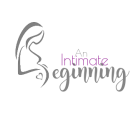Learning Objectives:
1. Develop or identify documents that will be used in the student’s personal practice.
2. Describe the benefits and risks of available birth settings.
3. Identify clients that are good candidates for direct-entry midwifery care at the initial interview and assess throughout the
prenatal period for complications that necessitate collaboration or referral.
4. Understand the components of a comprehensive health and obstetric, gynecologic and reproductive health history.
5. Describe the role of evidence-informed care in prenatal care.
6. Identify pregnancy through recognition of signs and symptoms, history-taking, physical assessments, and laboratory
testing.
7. Perform a routine prenatal care exam, including gestational assessment, abdominal assessment, fetal growth assessment,
monitoring of the fetal heart rate, fetal well-being assessment, pelvic examination, and clinical pelvimetry.
8. Perform ongoing history at each prenatal visit.
9. Describe components of the physical examination that evaluate potential for a healthy pregnancy.
10. Describe physiological and emotional changes in pregnancy.
11. Understand midwifery standards of care and guidelines in regard to prenatal care.
12. Have a basic understanding of common complaints and complications of pregnancy and non-pharmacological remedies
for those complaints.
13. Describe the Occupational Safety and Health Administration (OSHA) standards that apply to midwifery care during the
prenatal period, including specific infection prevention and control strategies.
14. Demonstrate facilitation of the informed decision-making process and provision of individualized care, counseling,
collaboration, and referral as indicated, evident throughout all documents.
15. Identify pre-existing factors and factors that develop any time during the childbearing cycle that make community-based
birth an unsafe option.
16. Provide health education to adolescents, pregnant persons and families about normal pregnancy progression, warning
signs and symptoms, and when and how to contact the midwife.
17. Provide routine education specific to pregnancy including appropriate hygiene in pregnancy, considerations for work
inside and outside the home, components of preparation of the home/family for the newborn, and common techniques to
physically prepare for labor.
18. Identify the ways that racism, heterosexism and bias impact prenatal care and shape health inequities that impact clients,
families and communities that midwives serve.
